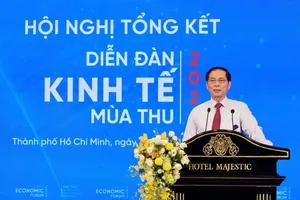RCEP is the FTA with the largest market size in the world, accounting for 2.2 billion consumers, or 30 percent of the world's population, with the gross domestic product (GDP) of about US$26.2 trillion, or about 30 percent of global GDP. Its difference from the Comprehensive and Progressive Agreement for Trans-Pacific Partnership is that the levels of development of the RCEP member countries are the most diverse, with the participation of both the world's leading economies and underdeveloped countries. The agreement is expected to promote the development of regional and global value chains and promote the economic development of countries in the ASEAN, including Vietnam and partner countries.
Besides the advantages, the RCEP might bring competitive pressure on Vietnamese goods and services. Among the countries participating in the RCEP, there are many markets and regions that Vietnam sees the highest trade deficits, such as China, the ASEAN region, and South Korea.
On the other hand, the quality and added-value content of most exported products of Vietnam are moderately modest. Meanwhile, economies in the RCEP have many partners with similar product structures to those of Vietnam, but with stronger competitiveness.
Besides the advantages, the RCEP might bring competitive pressure on Vietnamese goods and services. Among the countries participating in the RCEP, there are many markets and regions that Vietnam sees the highest trade deficits, such as China, the ASEAN region, and South Korea.
On the other hand, the quality and added-value content of most exported products of Vietnam are moderately modest. Meanwhile, economies in the RCEP have many partners with similar product structures to those of Vietnam, but with stronger competitiveness.
























